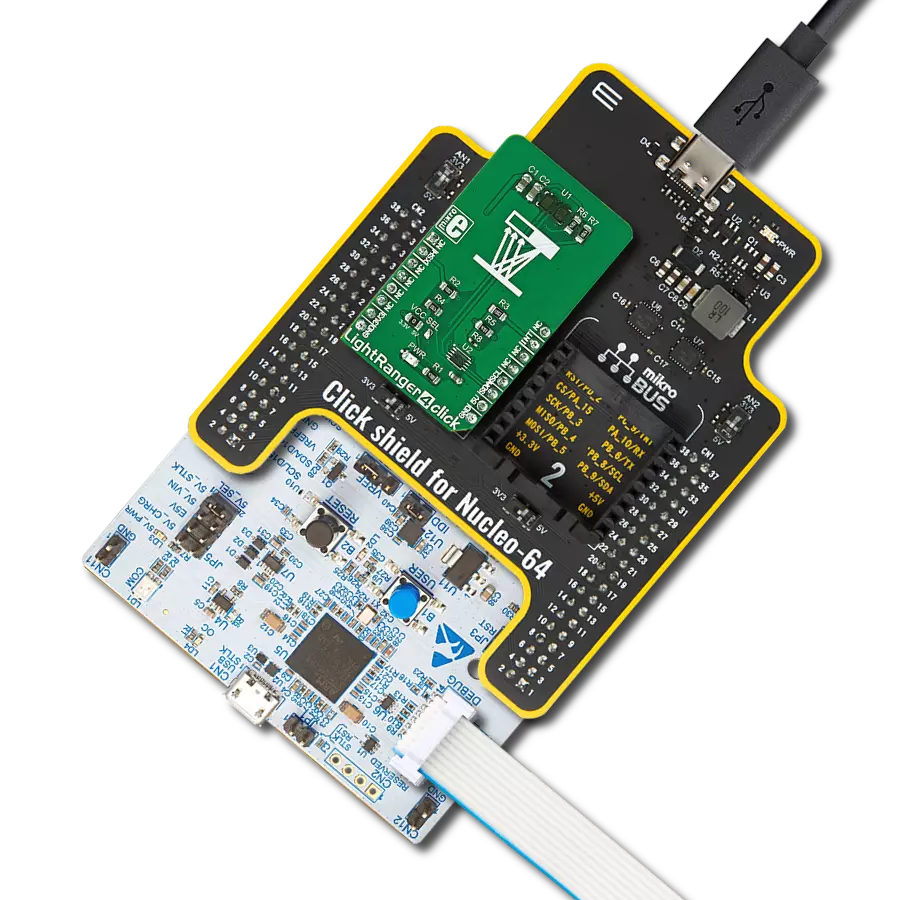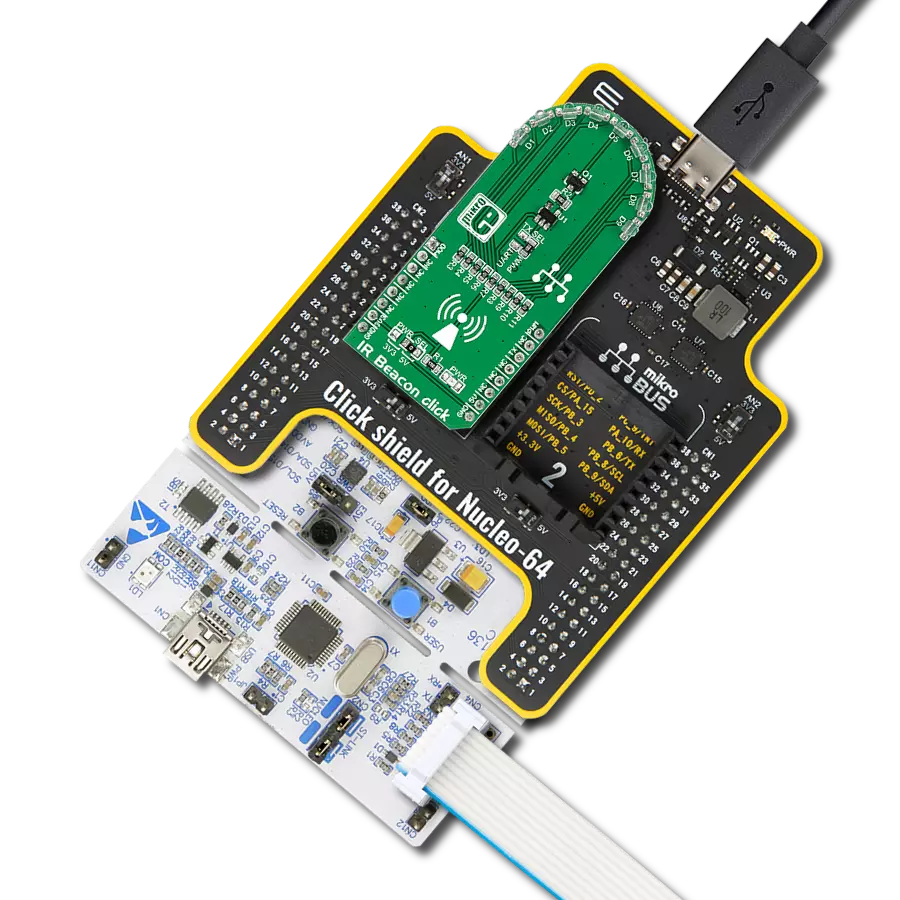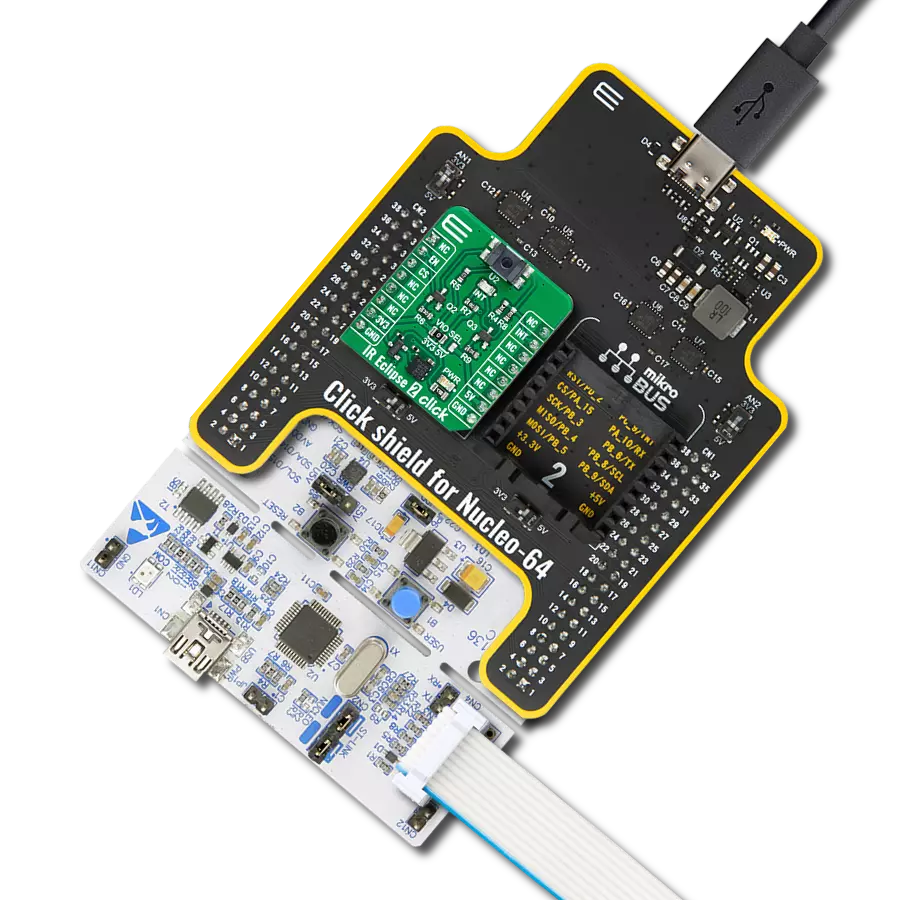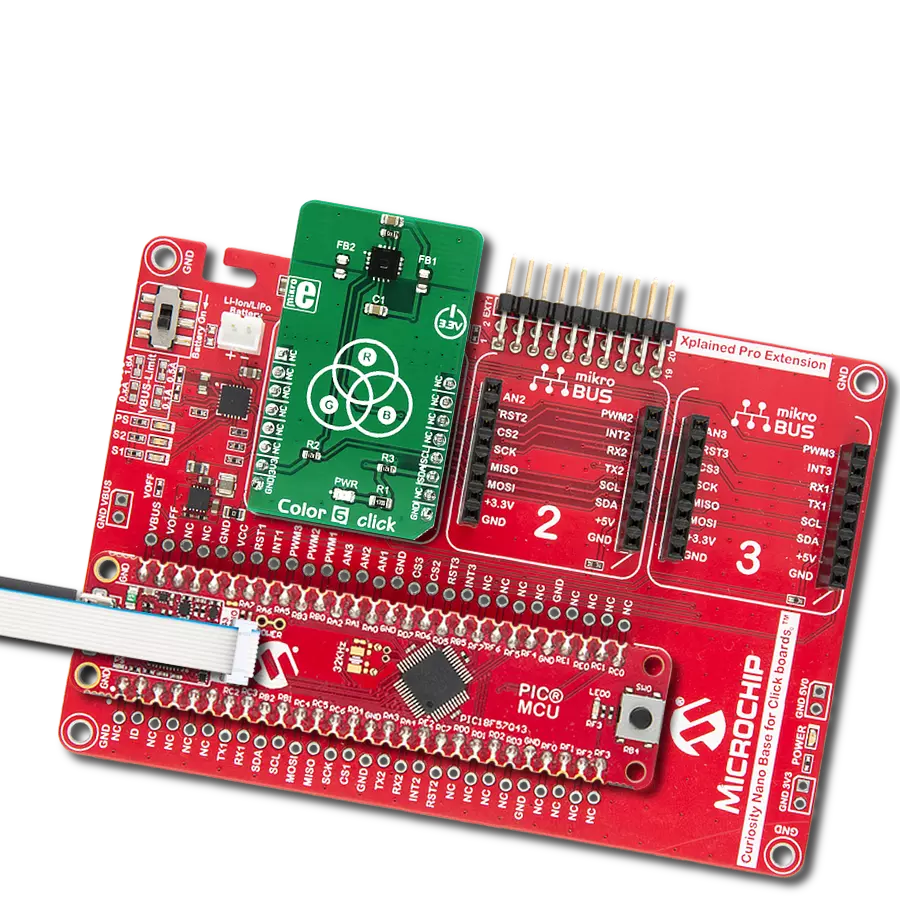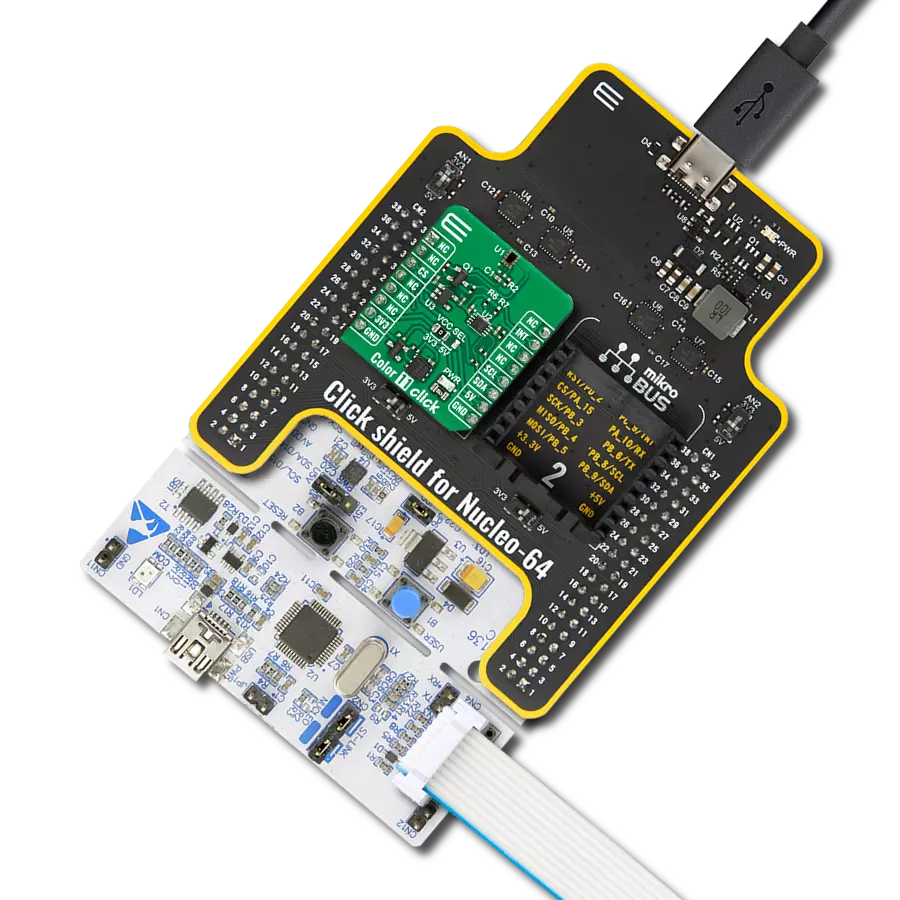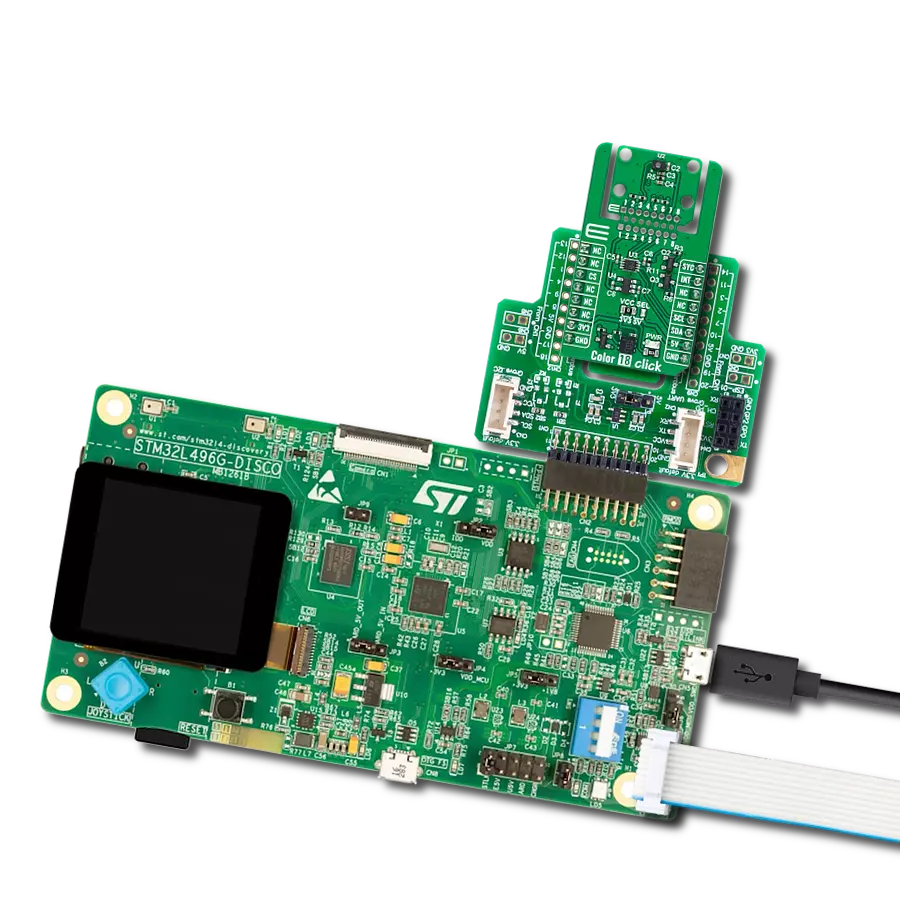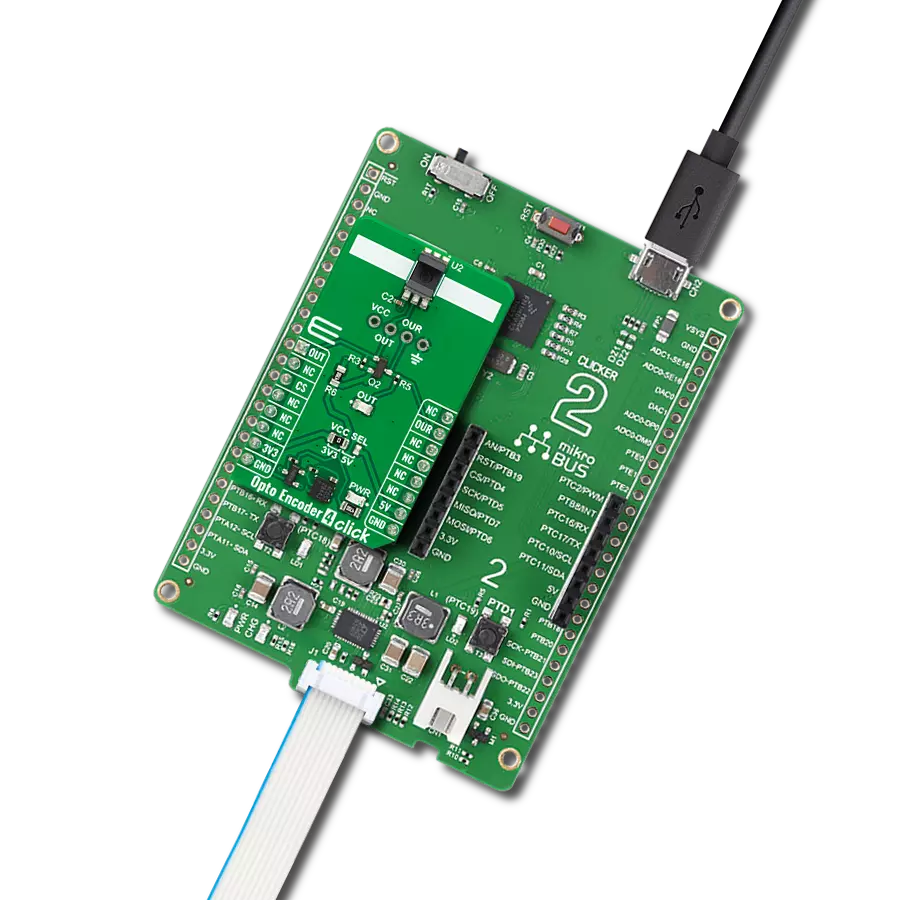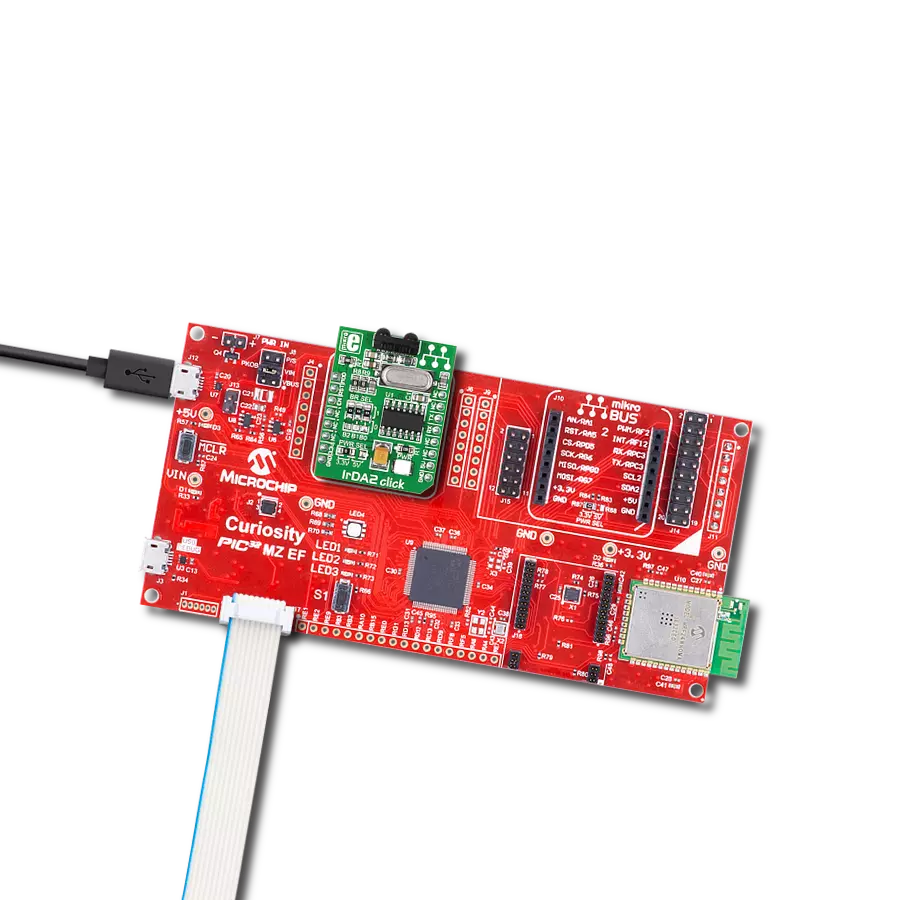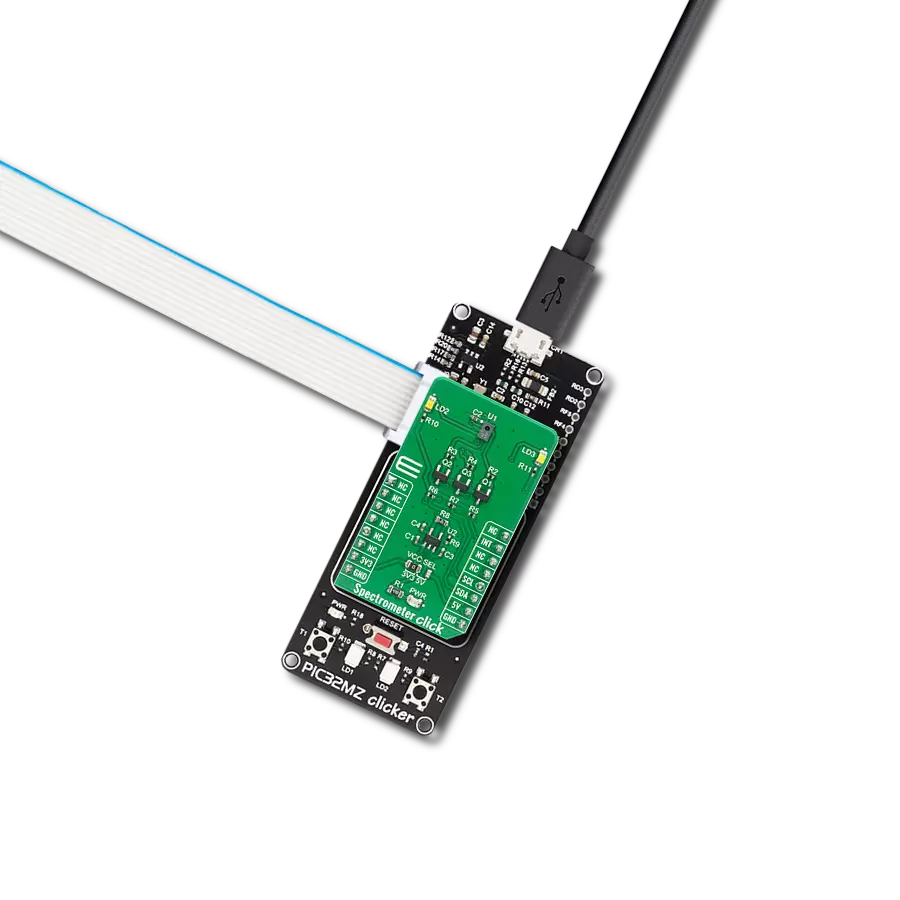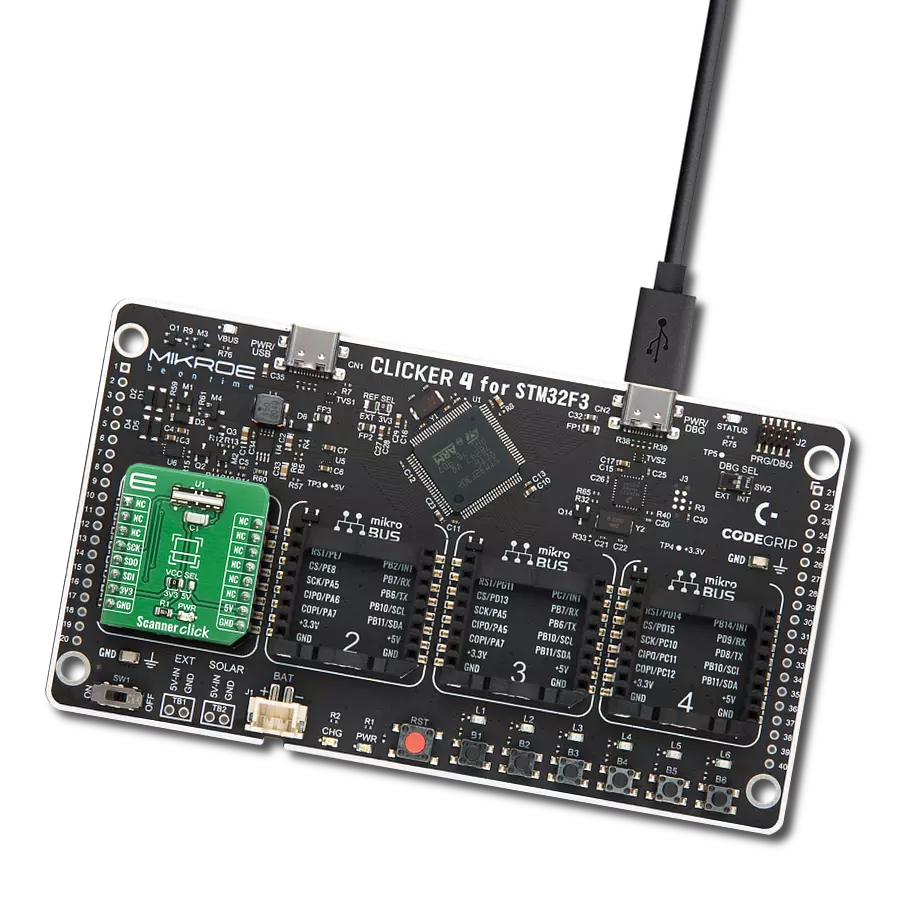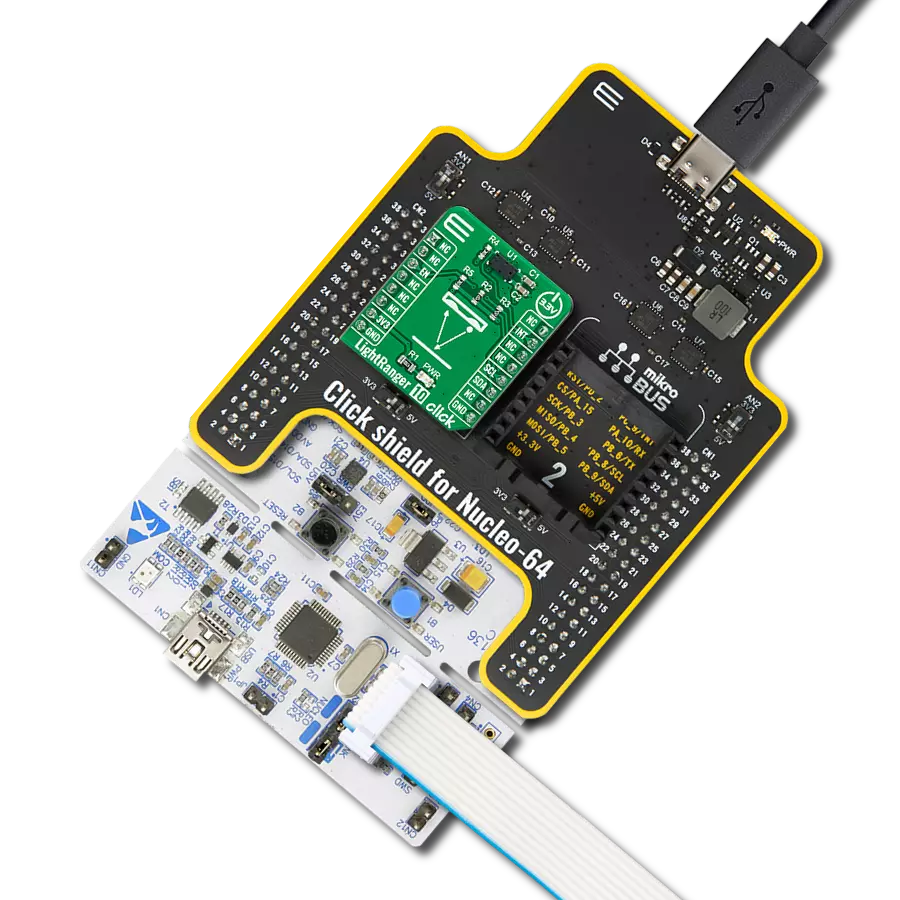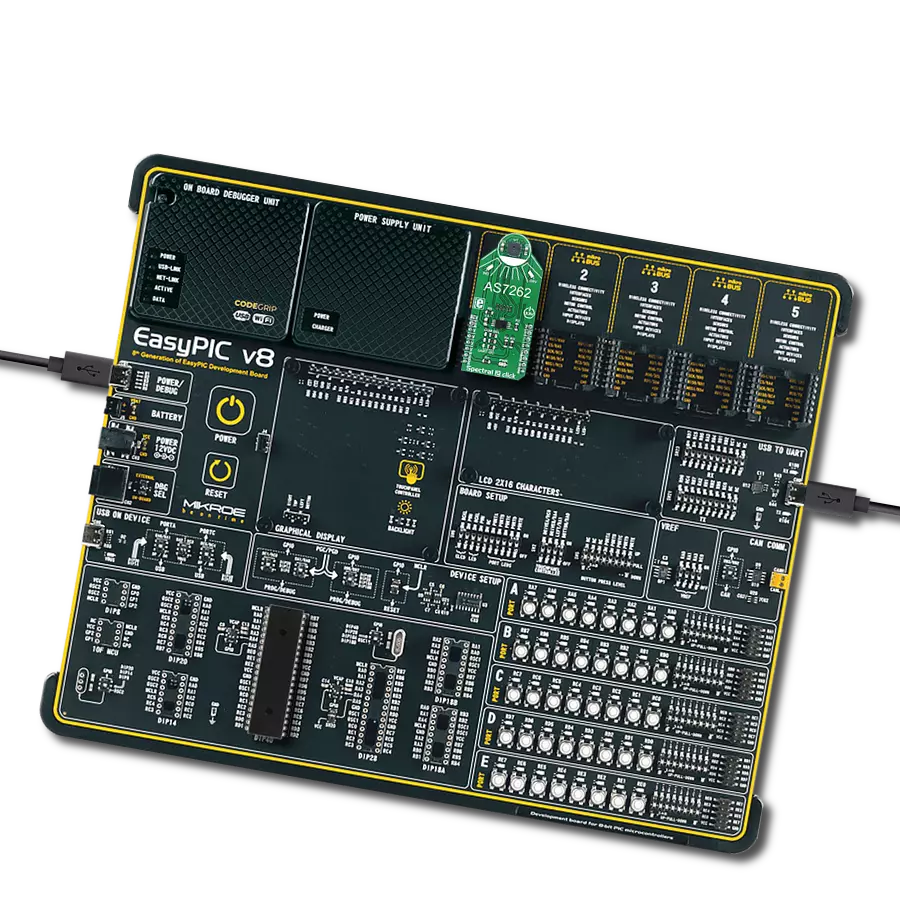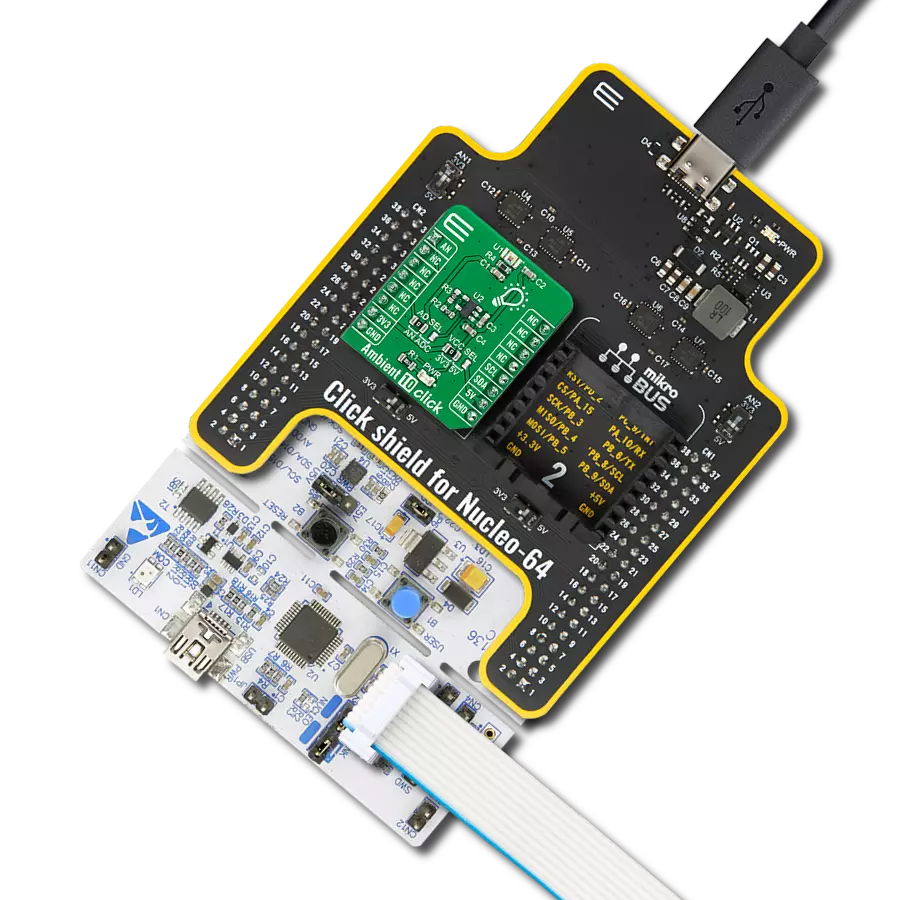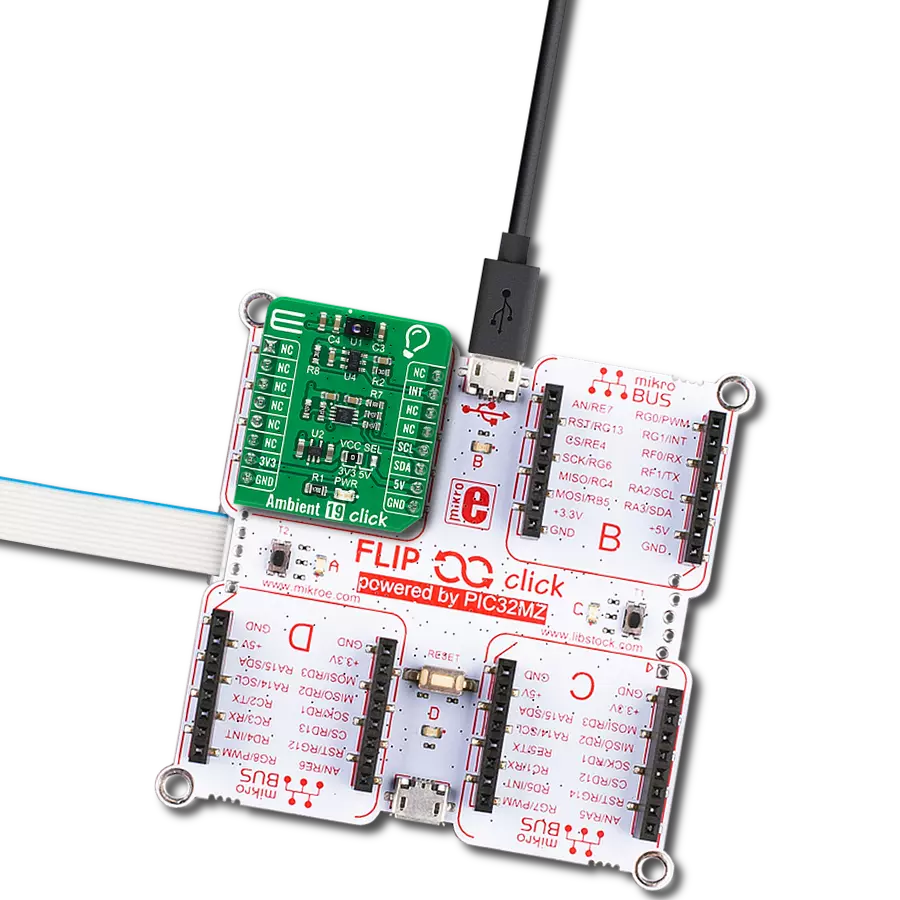Uncover object presence and precise positioning through the analysis of reflected light
A
A
Hardware Overview
How does it work?
IR REFLECT is based on the GP2S700HCP, a phototransistor output reflective photo interrupter from Sharp Microelectronics. It consists of one infrared emitter and one receiver facing the same direction towards the object. When the infrared beam from the emitter bounces back to the emitter when an object is placed within range, it triggers the photo interrupter, thus activating the sensor. The board can set off a false alarm if the sensor is exposed to other infrared light sources, such as an ordinary incandescent light bulb.
Infrared light will not reflect from the black surface, so the Click board™ will not detect it either. Meanwhile, reflective metallic surfaces will trigger the sensor from a more extensive range. The IR Reflect Click board communicates with the host MCU by sending analog values over the AN pin of the mikroBUS™ socket. In addition, this Click board™ features an LM2903, a low-power dual voltage comparator from STMicroelectronics. With the help of a P1 potentiometer and this voltage comparator, it is possible to set an
interrupt threshold that can provide information over an INT pin of this Click board™. The interrupt will also trigger an INT LED as a visual indicator. This Click board™ can operate with either 3.3V or 5V logic voltage levels selected via the PWR SEL jumper. This way, both 3.3V and 5V capable MCUs can use the communication lines properly. However, the Click board™ comes equipped with a library containing easy-to-use functions and an example code that can be used, as a reference, for further development.
Features overview
Development board
Nucleo 32 with STM32F031K6 MCU board provides an affordable and flexible platform for experimenting with STM32 microcontrollers in 32-pin packages. Featuring Arduino™ Nano connectivity, it allows easy expansion with specialized shields, while being mbed-enabled for seamless integration with online resources. The
board includes an on-board ST-LINK/V2-1 debugger/programmer, supporting USB reenumeration with three interfaces: Virtual Com port, mass storage, and debug port. It offers a flexible power supply through either USB VBUS or an external source. Additionally, it includes three LEDs (LD1 for USB communication, LD2 for power,
and LD3 as a user LED) and a reset push button. The STM32 Nucleo-32 board is supported by various Integrated Development Environments (IDEs) such as IAR™, Keil®, and GCC-based IDEs like AC6 SW4STM32, making it a versatile tool for developers.
Microcontroller Overview
MCU Card / MCU

Architecture
ARM Cortex-M0
MCU Memory (KB)
32
Silicon Vendor
STMicroelectronics
Pin count
32
RAM (Bytes)
4096
You complete me!
Accessories
Click Shield for Nucleo-32 is the perfect way to expand your development board's functionalities with STM32 Nucleo-32 pinout. The Click Shield for Nucleo-32 provides two mikroBUS™ sockets to add any functionality from our ever-growing range of Click boards™. We are fully stocked with everything, from sensors and WiFi transceivers to motor control and audio amplifiers. The Click Shield for Nucleo-32 is compatible with the STM32 Nucleo-32 board, providing an affordable and flexible way for users to try out new ideas and quickly create prototypes with any STM32 microcontrollers, choosing from the various combinations of performance, power consumption, and features. The STM32 Nucleo-32 boards do not require any separate probe as they integrate the ST-LINK/V2-1 debugger/programmer and come with the STM32 comprehensive software HAL library and various packaged software examples. This development platform provides users with an effortless and common way to combine the STM32 Nucleo-32 footprint compatible board with their favorite Click boards™ in their upcoming projects.
Used MCU Pins
mikroBUS™ mapper
Take a closer look
Click board™ Schematic

Step by step
Project assembly
Software Support
Library Description
This library contains API for IR REFLECT Click driver.
Key functions:
irreflect_reflect_status- Function detecting interrupt states of IR reflectionirreflect_analog_status- Function detecting states of analog pin of IR reflection
Open Source
Code example
The complete application code and a ready-to-use project are available through the NECTO Studio Package Manager for direct installation in the NECTO Studio. The application code can also be found on the MIKROE GitHub account.
/*!
* \file
* \brief IR reflect Click example
*
* # Description
* Example demonstrates the use of IR Reflect Click board.
*
* The demo application is composed of two sections :
*
* ## Application Init
* Initialization driver enables - Start write log.
*
* ## Application Task
* This is a example which demonstrates the use of IR Reflect Click board.
* On this type of photointerrupter the infrared emitter and receiver are facing the same direction,
* the infrared beam from the emitter gets bounced back to the receiver when an object
* is placed within the detecting range of the sensor ( optimal range is 3mm ).
* These sensors are used to detect an object's presence or motion, such as a piece of paper passing through a printer
* and counting when sensor is triggered.
* Results are being sent to the Usart Terminal where you can track their changes.
* Data logs on usb uart when the sensor is triggered.
*
*
* \author MikroE Team
*
*/
// ------------------------------------------------------------------- INCLUDES
#include "board.h"
#include "log.h"
#include "irreflect.h"
// ------------------------------------------------------------------ VARIABLES
static irreflect_t irreflect;
static log_t logger;
static uint8_t ir_state;
static uint8_t ir_state_old;
static uint16_t counter;
// ------------------------------------------------------ APPLICATION FUNCTIONS
void application_init ( void )
{
log_cfg_t log_cfg;
irreflect_cfg_t cfg;
/**
* Logger initialization.
* Default baud rate: 115200
* Default log level: LOG_LEVEL_DEBUG
* @note If USB_UART_RX and USB_UART_TX
* are defined as HAL_PIN_NC, you will
* need to define them manually for log to work.
* See @b LOG_MAP_USB_UART macro definition for detailed explanation.
*/
LOG_MAP_USB_UART( log_cfg );
log_init( &logger, &log_cfg );
log_info(&logger, "---- Application ----\n");
// Click initialization.
irreflect_cfg_setup( &cfg );
IRREFLECT_MAP_MIKROBUS( cfg, MIKROBUS_1 );
irreflect_init( &irreflect, &cfg );
ir_state = 0;
ir_state_old = 0;
counter = 1;
}
void application_task ( void )
{
// Task implementation.
ir_state = irreflect_reflect_status( &irreflect );
if ( ir_state_old != ir_state )
{
if ( ir_state )
{
log_printf( &logger, " Counter = %u\n", counter);
counter++;
}
ir_state_old = ir_state;
}
}
int main ( void )
{
/* Do not remove this line or clock might not be set correctly. */
#ifdef PREINIT_SUPPORTED
preinit();
#endif
application_init( );
for ( ; ; )
{
application_task( );
}
return 0;
}
// ------------------------------------------------------------------------ END
Additional Support
Resources
Category:Optical



















